Ayetel Al-Kürsi
“Allah! There is no god, but He-the Living, The Self-subsisting, Eternal. No slumber can seize Him Nor Sleep. His are all things In the heavens and on earth. Who is there can intercede In His presence except As he permitteth? He knoweth What (appeareth to His creatures As) Before or After or Behind them. Nor shall they compass Aught of his knowledge Except as He wilted. His throne doth extend Over the heavens And on earth, and He feeleth No fatigue in guarding And preserving them, For He is the Most High the Supreme (in glory).” – from the Holy Koran, “The Cow” verse 255 of the second chapter, Surah Baqarah.
Well, the first week in March has flown by and with it decent weather and fun happenings. I’ve managed with the help of a mix of Google Translate and an internet PDF of the theology of the Holy Koran, priced together my copy of the Ayetel Al-Kürsi that I bought in Grozny. I heard it sung in the original Arabic on Youtube and it was very beautiful, what a melody. I always enjoy going to the original source material when possible and experiencing it as it was originally intended. My copy is currently hanging on the back my door and is a lovely addition to my room. In respect to my former roommates religious wishes, I didn’t hang it up, but on that he is no longer here, I’ve decided to hang it.
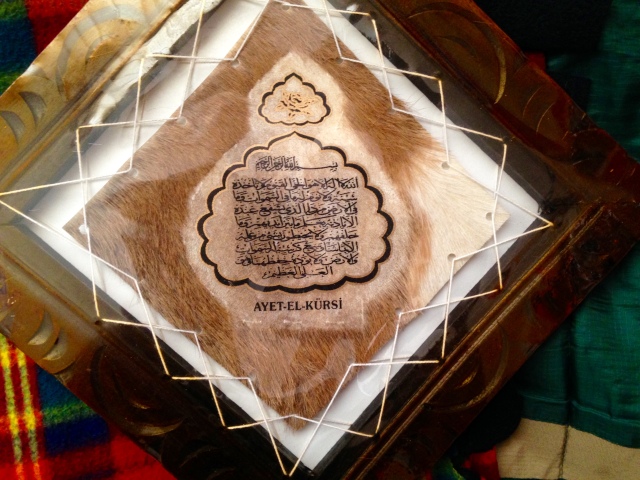
The weather has been nice for the most part. Being the beginning of March, I’m skeptical that it will be in the mid-50’s forever, but I’m hopeful that it will progressively get warmer. Last Friday was gorgeous. It was in the mid-60’s and the sun was shinning to happily in the clear, blue sky. Sara, Jeanne and I take a walk up Malshuk and stopping to rest near and on the “Love Gate” that is up there. I climbed on top to the arch-like monument and relaxed. I could see most of the front range, though the haze from either smoke or dust (likely a combination of both) was concealing Elbrus. I sat up there for a while and just soaked in the view. The warmth of the sun felt so good on my skin and a calm, cool breeze blew just enough to make the hair on my arms stand on end. We observed Russians walked up and down the mountain, some of them wearing high heels, a sight that I will never get over. During the last few days, the mornings have been grey and cloudy, the afternoon’s bringing the sun. It has also rained a lot, a good sign for the earth and the farmers who cultivate it.
Classes have been slow. We have had so many holidays and days off, that I’m beginning to wonder if class even exists anymore. Last week, our grammar teacher fell ill and this week we had classes cancelled on Monday and Tuesdays because of International Women’s Day. Russians and some other nations celebrate this holiday on the 8th of March, recognizing the various roles women have in society and their accomplishments. Usually, people celebrate by giving their favorites girls flowers, presents, and maybe a nice, sit down dinner at a restaurant. I bought a few roses for Anna and I’s dance teacher, to thank her for all the time and work that she has put in to teach us the various forms of Kabardian Kafa and Georgian lezginka. I’ve spent most of the long weekend catching up on sleep, reading and watching several classic films including H.G. Well’s, The Time Machine and Soylent Green.
We have also had a few fun moments here at the obshaga. We have been going to Zlato Bar (another bar that we frequent) more often on Thursday evenings. Out traditions night out, this Zlato has a calmer and more “female friendly” atmosphere then the other bar that we used to good to. The dark beer at Zlato is great and whatever make the girls happier is a better option in this regard. We have all given a wonderful welcome to Florane, a new addition to our international family here. Last Friday, we went to anther bar called Factory Bar, a mix between a club, a bar and playboy mansion (as there were waitresses walking around in buddy ears and tails). We had some booze at the dorm before leaving so I just talked to my friends and shared a hookha stand. After some time spent here, we then headed at a shashlik stand by Rumashka (a part of Pyatigorsk) and ate lamb shashlik with lamb and potatoes and lavash. In this part of Pyatigorsk, you can run into some very strange characters at 3:30 in the morning. Diogo and I spoke with a pair of Armenians who were nice guys, but a Russian over hearing us, took offense to that and sound all kinds of slurs about Armenians and Caucasians before sitting his drunk body in a chair. He then turned his attention to Diogo and I and started talking to us, insisting that Diogo was “African” and not Brazil and that I was “Scottish” and a “spy,” after I explained to him that my first name was Scottish in origin. I don’t understand who some Russians can’t pronounce my name. They have all the letters for it. The spelling of Иан in Russian, equals Ian, it’s not that difficult. I have see my name spelled these ways as well: Иен, Йен and as my visa spells it Ян… I’m not Chinese… Yan is not my name. An interesting encounter to say the least.
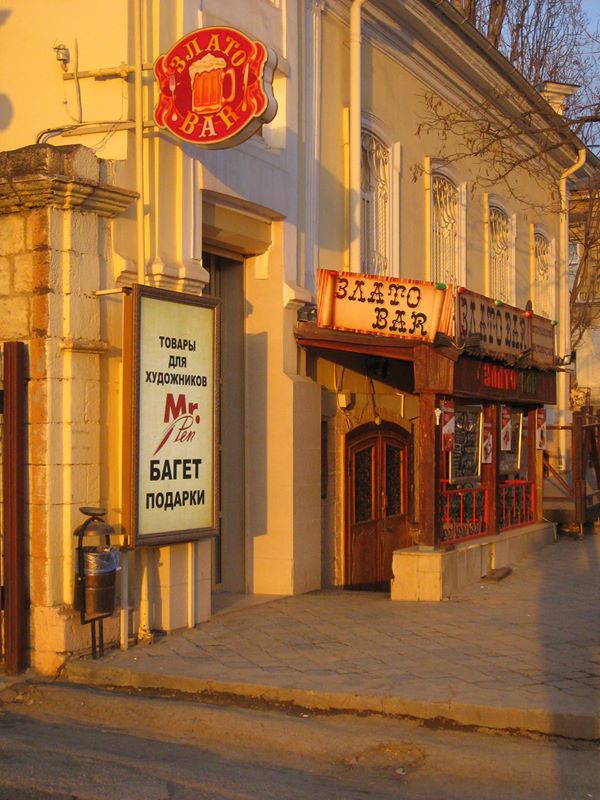
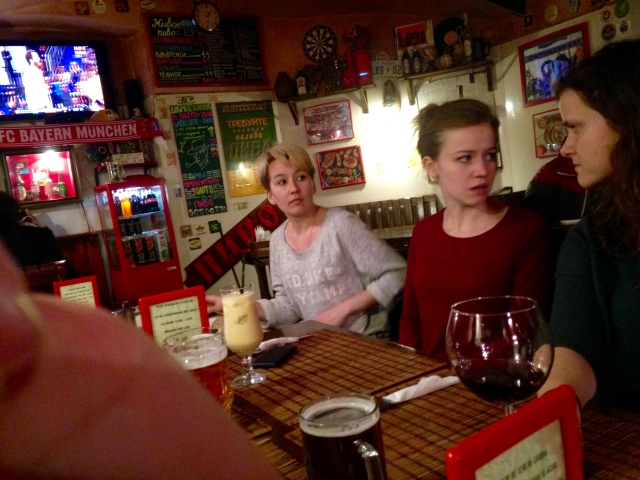
The following weekend was uneventful. I read, slept and felt like a total couch potato. Grey clouds swept into the lowlands, over taking much of Malshuk and half of Beshtau. Earlier the previous day, plans were made to climb Beshtau, but as the dark clouds gathered that evening I knew that the plan was going to be for not. It rained for most of the night and I got a message on my phone that said the event had been cancelled, a good decision. The rains would had made the ground soft and muddy, making the climb both dirty and dangerous. The skies remained cloudy for most of the Sunday and Monday, cold air lingering and dropping temperatures to the mid-50s again. We passed the time away during this days by talking and sharing beer, two of the obshaga’s main pass times. On Tuesday, we celebrated Women’s Day, but first I wanted another shashlik fix, so Diogo, Sara, Christophe and I headed down to Shashlik Number One and went to town. We ordered ribs and loins of lamb, with lavash, potatoes, mushrooms, Georgian style potatoes (semi-fried potatoes with sauce and paprika, a new favorite of mine), with Georgian plum and pepper sauce and white sauce (garlic sauce). It was a feast fit for the best Caucasian table. The ribs of lamb towered over plate they were served on and the smell was a heavenly aroma of seared flesh, burnt wood and grease for the fat of the lamb.
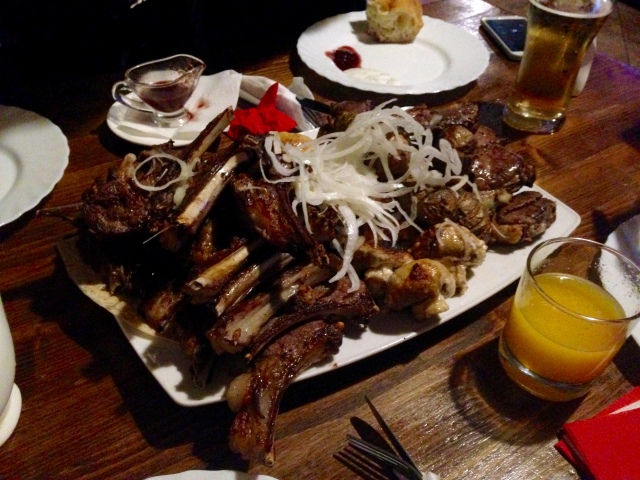
After our wonderful meal, Christophe and I headed to Neapolitano and waited for Maddie, Alina and Vika to show up. I’m glad that we head up to the restaurant when we did, as the place was packed to the walls with people at 8 o’clock. I waited for maybe five or ten minutes for an open table, found one and quickly claimed it for our party. On the way to Neapolitano, I bought two, white tulips, one for Alina and one for Vika as their gifts for Women’s Day. The girls then arrived, I give them their flowers which they were most appreciated, sitting on either side of me, the thorn between the two roses. I just ordered a beer there, Alina and Maddie sharing a pizza, while Vika had sushi, and Christophe with his girlfriend had tea. We had a good time and it was so nice to celebrate Women’s Day with my girls.
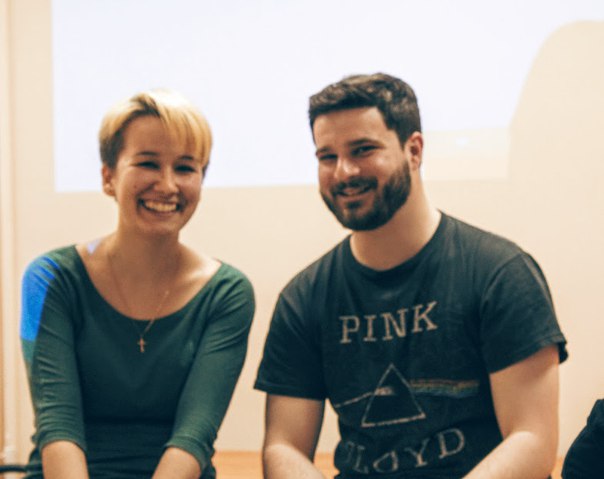
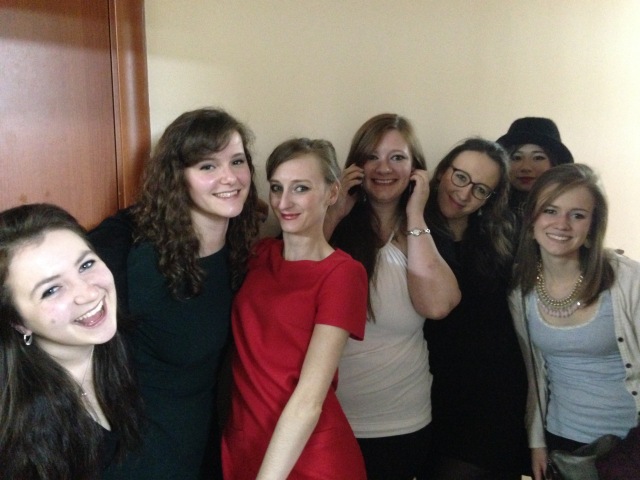
On the subject of Women’s Day, there so some interesting things to tell about the Circassians and their women. It has been thought by many historians and linguists that the legend of the Amazon come from Greek settlers and their encounters with Circassians. Pottery dated from to the fifth-century B.C. has been found in the North Caucasus (specifically historic Circassia) depicting women riding on horses, fighting and hunting. These theories have been made my comparing phonetic sounds of both Ancient Greek and Proto-Circassian.
Linguists such as John Colarusso, an expert in Kabardian and Abkhaz from Canada’s McMasters University (I have communicated with him though e-mail), have translated the inscriptions on these surviving pieces of pottery and have come to the conclusion that the ancient Greeks seem to have been trying to re-create sounds of the ancient Scythian names and words, a language group who’s decedents are many Caucasian languages. On the “Amazon vases,” Colarusso found an archer named Battle-Cry, a horsewomen named Worthy of Armor, and others with names such as Hot Flanks the maybe had erotic connotations. On one vase, a scene for two Amazons hunting with a dog appears with a Greek transliteration for the Abkhazian (a cousin nation and language of the Circassians) word meaning “set the dog loose.” Other figures show heroes such as Hercules and Achilles, characters who share many traits to the Nart heroes of Circassian and Caucasian legends. On one of the vases, some characters speak decipherable Greek phrases, Colarusso translating the same Circassian variants to similar meanings and even taking Greek phrases that looked like gibberish, such as “noraretteblo” into the Circassian “This sneak thief steals from the man over there.” Some very cool stuff. It is very interesting not only because of the sharing between the ancient Greeks and the Circassians, but also because the translations point out the interconnection of the ancient world where the Bronze Age trade routes extended from Iberia through the Caucasus into Siberia.
Circassian women have also been very famous historically speaking for their beauty, charisma, strength and did I mention beauty. Literary history suggests that Circassian women wee thought to be unusually beautiful, spirited, slender and elegant, making them some of the most desirable women in Europe and within the harems of the Ottoman Sultans. The French philosopher, Voltaire enhanced the legend of Circassian women in his Letter on the English, written in 1734 alluding that…
“The Circassians are poor, and their daughters are beautiful, and indeed it is in them they chiefly trade. They furnish with those beauties the seraglio of the Turkish Sultan, of the Persian Soppy, and of all of those who are wealthy enough to purchase and maintain such precious merchandise. These maidens are very honorably and virtuously instructed how to fondle and caress men; are taught dances of a very polite and effeminate kind; and how to heighten by the most voluptuous artifices the pleasures of their disdainful masters for whom they are designed.” – from Letter XI, On Inoculation
This reputation goes as far back as the High Middle Ages, when the Circassians coast (modern day cities such as Sochi and Anapa) was frequented by Genoese traders. During the Ottoman Empire and the Persian Safavid and Qajar dynasties, Circassian were taken and lived as slaves within the harems of the Sultan and the Pasha, which in turn influenced the common trope in Western Orientalism. As a result of this reputation, both Europeans and Americans idealized the Circassian women as the perfect forms of feminine beauty within poetry, art and cosmetic products during the 18th and 19th centuries. Westerns have taken a special interest in Circassian women and at the height of its popularity, the term Circassian was a household name in America during the 1860s. Mark Twain wrote in The Innocents Abroad (1869) that “Circassian and Georgian girls are still sold in Constantinople by their parents, but not publicly. The combination of issues such as slavery, Orietnlism, racial ideology and sexual desire, gave Circassian women popularity. American showman P. T. Barnum even went as far as to use the word “Circassian” in the title of soap and shampoo his products, claiming that it was made of materials used by the women of Circassia. He also “displayed” the “Circassian Beauties” at his American Museum in 1865, though it is unlikely that any of the women within these shows (hired for their tall, slender figures with teased hairstyles) had any Circassian ancestry. Barnum’s most popular women was marketed under the name “Zalumma Agra” and was in reality a local American girl from New York City.
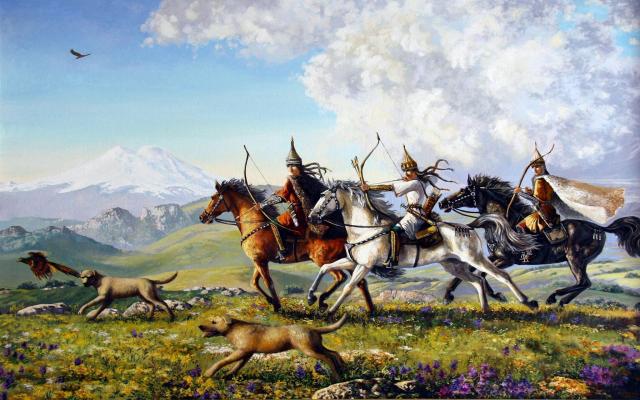
Painting by Aslan Karmockow
Continuing the theme of historical events, the Russian holiday of Maslenitsa started on the 7th of March. Maslenitsa is the Eastern Slavic religious and folk celebration during the last week before the Lent, corresponding to the Western tradition however, beginning on a Monday instead of a Wednesday. Maslenitsa will end on the 13th of March. Some scholars believed the Maslenitsa maybe the oldest Russian-Christian holiday as evidence of it’s practice dates to the 2nd century A.D. Maslenitsa, however maybe even older, taking into account it’s pagan roots. In Slavic mythology, Maslentisa is a sun-festival, a personification and tribute to the god Volos, symbolizing the end of winter and the coming of spring. It is unclear when the festival became Christianized.
During the week of Maslenitsa, it is forbidden for devout Orthodox Christians to eat meat As in the Western tradition, this week is characterized by the making bliny (thin pancakes, but thicker then a crepe), to use up the rich and fatty foods before the fast that follows. Butter, eggs, milk and cheeses will be eaten. During Slavic paganism, bliny symbolized the round shape and golden color of the sun. Maslenitsa (for the extremely devout) represents the last chance to take part in social activities that include: secular music, dancing and other distractions from pious pursuits, living a more prayerful, sober and self-reflective life during the Lenten season. The last day of Maslenitsa is called “Proshchenoye Voskresen’ye” or “Forgiveness Sunday.” Relatives and friends will traditionally ask each other for forgiveness of one another by making a polka or bow and may give presents.
During the Soviet Era, Maslenitsa was not celebrated officially, as Communism promoted Atheism. It was widely observed in families however, regardless of it’s religious significance as an opportunity to prepare food for family and friends. During the period of perestroika, the holiday was revived as a religious practice for many Russians. Here in the Caucasus, Maslenitsa is celebrated but, many Russians do not abstain from eating meat, as celebrations can be accompanied by shashlik vendors, who cater to the secular crowds and to the non-Christian population. Most Muslims will not partake in the festivities, however some many enjoy the days off of work that are sometimes giving during this time. Our faculty hosted a party for Maslenitsa, some of the students ran a blini stand, making them per order. Tea was also served in mass amounts. Igor and Kensia were our masters of ceremonies, talking about the point of Maslenitsa and the traditions. They also hosted various dances and games, the girls dancing Russian and Cossack dances, and those that were brave enough (including myself) played games such as “tug-of-war” and potato pealing races. Our faculty also did a bonfire to my surprise. We all went outside and watched the effigy of winter was burned away. Spring has officially “arrived.”
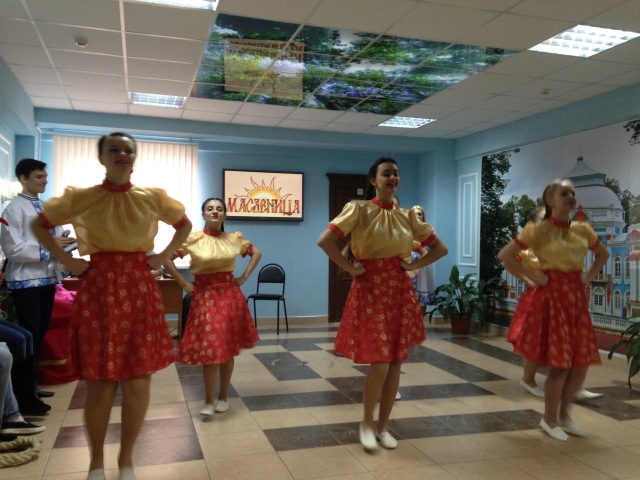

Anna and I will go and visit a bonfire on Sunday, burning the Snow Queen and releasing spring from her icy hands. It all be held in one of Pyatigorsk’s parks. I think events going to be at Pioneer’s Park, but I’ll find out on later. My friend Antonio has now arrived and it is going to be like old times. It brings back so many memories from two years ago. Antonio brought a few Italians with him, so I have a feeling that the Italian language will soon dominate the halls of the obshaga.
Well, that’s it for the moment. I hope that the weather with continue to bring warmth and that the heat wave in the States will be pleasant. It’s nice to have a warm spell during March in Nebraska. I’m sure Taylor is loving it. From Russia with regards.


